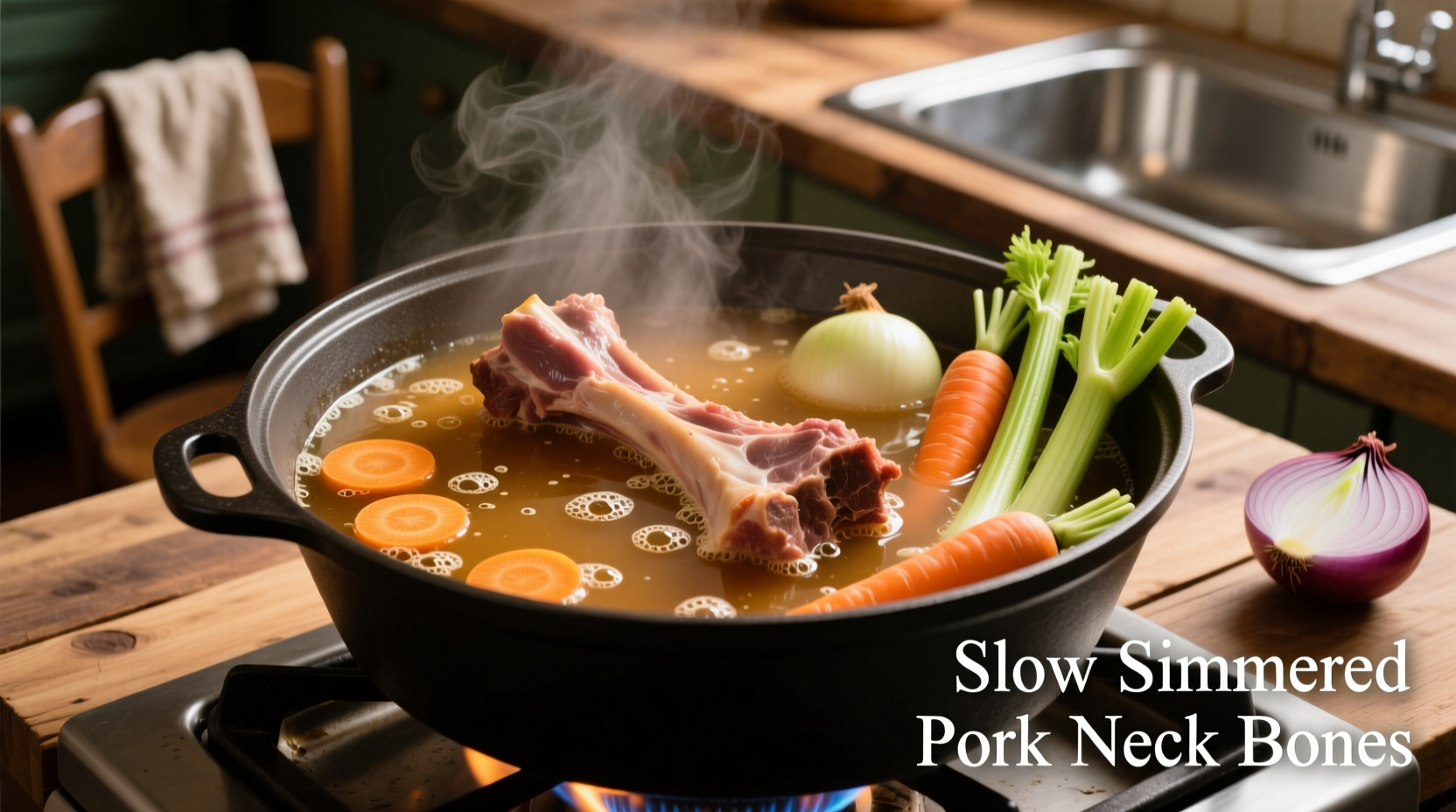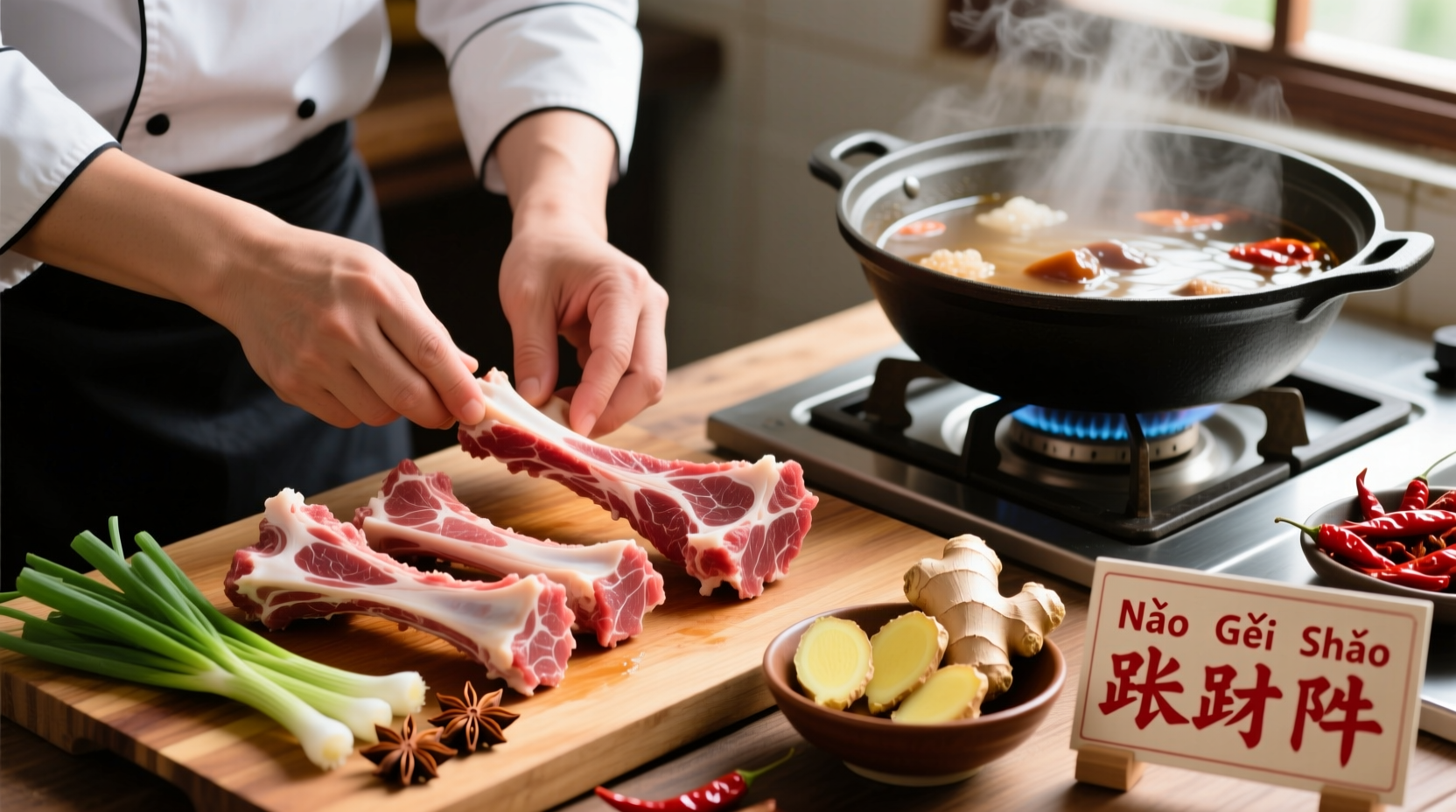Understanding Neck Bones: Culinary Potential and Selection
Neck bones—typically pork or beef—are often overlooked but pack incredible flavor potential. These cuts contain abundant collagen that transforms into gelatin during slow cooking, creating rich, velvety textures in broths and sauces. According to USDA Food Safety and Inspection Service guidelines, pork neck bones should be cooked to a minimum internal temperature of 145°F (63°C) with a 3-minute rest period for safety.
When selecting neck bones, look for:
- Fresh appearance with pinkish-red meat
- Minimal odor (should not smell sour)
- Good meat-to-bone ratio
- Visible marbling for optimal flavor release
| Cooking Method | Time Required | Texture Result | Best For |
|---|---|---|---|
| Boiling/Simmering | 2-3 hours | Falls-off-the-bone | Broths, soups |
| Slow Cooker | 6-8 hours | Extremely tender | Hands-off cooking |
| Oven Braising | 2.5-3.5 hours | Rich caramelization | Deep flavor development |
| Pressure Cooker | 45-60 minutes | Firm but tender | Time-constrained cooking |
Essential Preparation Techniques
Proper preparation ensures clean flavors and optimal texture. Begin by rinsing neck bones under cold water, then soak them in a mixture of water and 2 tablespoons of vinegar for 30 minutes. This removes impurities and reduces any gamey flavors. After soaking, rinse again and pat dry thoroughly.
For enhanced flavor development, consider blanching:
- Place neck bones in a pot and cover with cold water
- Bring to a boil over medium-high heat
- Once boiling, reduce to a simmer for 5 minutes
- Drain and rinse under cold water
- Scrape off any scum from the bones

Step-by-Step Cooking Process
Follow this professional technique for perfectly cooked neck bones every time:
Traditional Simmering Method
This method yields the most versatile results for soups and stews:
- Place prepared neck bones in a large pot
- Add enough cold water to cover by 2 inches (5 cm)
- Include aromatics: 1 chopped onion, 2 celery stalks, 2 carrots, 4 garlic cloves
- Bring to a gentle simmer (do not boil vigorously)
- Add 2 bay leaves and 1 teaspoon black peppercorns
- Cover partially and simmer for 2-3 hours
- Skim foam periodically during first 30 minutes
- Check tenderness: meat should pull away easily from bone
For richer flavor, replace water with low-sodium broth or add a splash of apple cider vinegar to help extract collagen. The American Culinary Federation recommends maintaining a gentle simmer rather than a rolling boil to prevent the meat from becoming tough.
Flavor Enhancement Strategies
Elevate your neck bones with these chef-approved techniques:
Seasoning Timing Matters
Add salt in two stages for optimal flavor penetration:
- Initial addition: 1 teaspoon per pound when starting to cook
- Final adjustment: After 2 hours of cooking, taste and adjust
Flavor Pairing Guide
Complementary ingredients that enhance neck bone dishes:
- Classic Southern: Collard greens, smoked turkey wings, onions, apple cider vinegar
- Caribbean: Allspice, thyme, scotch bonnet peppers, coconut milk
- Asian-Inspired: Star anise, ginger, soy sauce, rice wine
- Mediterranean: Tomatoes, olives, rosemary, lemon zest
Food Safety and Storage Guidelines
Follow these critical safety practices when cooking neck bones:
- Never leave neck bones at room temperature for more than 2 hours
- Refrigerate cooked neck bones within 2 hours of cooking
- Store in airtight containers for up to 4 days
- Freeze for up to 3 months in heavy-duty freezer bags
- Reheat to 165°F (74°C) internal temperature
The USDA Food Safety and Inspection Service emphasizes that proper cooling is crucial—divide large batches into shallow containers to cool quickly before refrigerating. This prevents bacterial growth in the temperature danger zone (40°F-140°F).
Troubleshooting Common Issues
Solve these frequent neck bone cooking problems:
Tough Meat
If your neck bones remain tough after cooking:
- Continue simmering in 30-minute increments
- Ensure liquid maintains a gentle simmer (180-200°F)
- Add 1 tablespoon of acid (vinegar or lemon juice) to help break down collagen
Cloudy Broth
For crystal-clear broth:
- Start with cold water and gradually bring to temperature
- Skim foam diligently during first 20 minutes
- Avoid boiling—maintain a gentle simmer
- Strain through cheesecloth for professional results
Serving Suggestions and Leftover Ideas
Maximize your neck bone investment with these serving options:
- Traditional: Serve with collard greens, black-eyed peas, and cornbread
- Modern twist: Shred meat and use in tacos with pickled onions
- Soup base: Use broth for hearty vegetable or bean soups
- Grain bowl: Pair with quinoa, roasted vegetables, and tahini sauce
- Leftover magic: Remove meat from bones and use in pasta sauces or casseroles
Professional chefs recommend removing meat from bones after cooking for maximum versatility. The extracted meat works beautifully in sandwiches, salads, or as a topping for creamy polenta.











 浙公网安备
33010002000092号
浙公网安备
33010002000092号 浙B2-20120091-4
浙B2-20120091-4